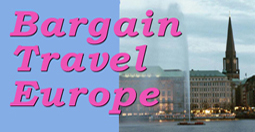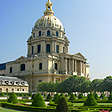SACRE COEUR - MONTMARTRE
Bohemians and Martyrs
 In
the most recent Woody Allen movie “Paris at Midnight” which
has become a surprise hit, audiences come out feeling like they’ve
taken a vacation to Paris. The explores the romantic yearning that life
was better in an earlier time, with a young author wandering the streets
of Pairs, taken back to the Paris of the 1920s, when writers and artists
gathered at the salons of Gertrude Stein and the likes of Ernest Hemingway
and F. Scott Fitzgerald mingled with Salvador Dali and Pablo Picasso,
and taken back to even earlier romantic eras.
In
the most recent Woody Allen movie “Paris at Midnight” which
has become a surprise hit, audiences come out feeling like they’ve
taken a vacation to Paris. The explores the romantic yearning that life
was better in an earlier time, with a young author wandering the streets
of Pairs, taken back to the Paris of the 1920s, when writers and artists
gathered at the salons of Gertrude Stein and the likes of Ernest Hemingway
and F. Scott Fitzgerald mingled with Salvador Dali and Pablo Picasso,
and taken back to even earlier romantic eras.
 Much
of the movie was filmed around Montmarte, the famous district crowned
by the beautiful Basilica of the Sacred Heart, the Sacré Coeur.
Though now a major tourist area and in the heart of the city, crowded
with restaurants and shop Montmartre was once a bare steep butte above
the city where during the Siege of Paris by Henry IV (see Nogent
Sur Seine) in 1590 the vantage was used an artillery position to bombard
the city, and again
by the Russians during their occupation of Paris after the defeats of
Napoleon in 1814 (see Arc
de Triomphe). The hill gets
its name Mountain of the Martyr, as it was the reputed spot where St
Denis,
the
patron
saint
of
Paris,
was beheaded. As a district outside the tax zone of the City of Paris
in the 18th Century, it attracted drinking and baudy establishments.
In the mid-19th Century Impressionist artists like Camille Pissaro came
to Montmatre for the cheap rents for their studios.
Much
of the movie was filmed around Montmarte, the famous district crowned
by the beautiful Basilica of the Sacred Heart, the Sacré Coeur.
Though now a major tourist area and in the heart of the city, crowded
with restaurants and shop Montmartre was once a bare steep butte above
the city where during the Siege of Paris by Henry IV (see Nogent
Sur Seine) in 1590 the vantage was used an artillery position to bombard
the city, and again
by the Russians during their occupation of Paris after the defeats of
Napoleon in 1814 (see Arc
de Triomphe). The hill gets
its name Mountain of the Martyr, as it was the reputed spot where St
Denis,
the
patron
saint
of
Paris,
was beheaded. As a district outside the tax zone of the City of Paris
in the 18th Century, it attracted drinking and baudy establishments.
In the mid-19th Century Impressionist artists like Camille Pissaro came
to Montmatre for the cheap rents for their studios.
After the disastrous defeat of the French in the Franco-Prussian War of 1870 (see Bourbaki Panorama Lucerne) and the brief rise of the Paris Commune, that experiment in French socialism of workers rule following the theoretical ideas of Karl Marx (see Chethams Library Manchester) mixed with the resurgence of the French revolutionary spirit which ended in 1871 with the bombardment of tunnels under the Montemartre hill where the forces of the Army of the Versailles sealed the fate of the workers movement and brought on the Third Republic.
Sacre Coeur
 The
inspiration for the magnificent church on the top of the martyr’s
hill came from the devastations of war and the bloody end of the Communards.
Built beginning in 1876 and completed in 1912, the Catholic church of
the Sacred Heart was originally dedicated to honor of 58,000 dead in
the Franco-Prussian War, though by decree of the National Assembly in
2010, now also acknowledges the fate of the Commune. The Basilica of
Sacre Coeur is built of a special travertine stone from the Seine-et-Marne
region (see WWII Cemeteries of Seine-Marne) of a calcite that bleaches
a natural white color resisting corrosion. The church gets its name from
the Sacred Heart of Jesus. The unique design with its pointed domes takes
inspiration from the Byzantine style and neo-Romanesque, a reaction of
the Baroque revival excesses of Baron Haussman’s rebuilding of
Paris under Louis Napoleon.
The
inspiration for the magnificent church on the top of the martyr’s
hill came from the devastations of war and the bloody end of the Communards.
Built beginning in 1876 and completed in 1912, the Catholic church of
the Sacred Heart was originally dedicated to honor of 58,000 dead in
the Franco-Prussian War, though by decree of the National Assembly in
2010, now also acknowledges the fate of the Commune. The Basilica of
Sacre Coeur is built of a special travertine stone from the Seine-et-Marne
region (see WWII Cemeteries of Seine-Marne) of a calcite that bleaches
a natural white color resisting corrosion. The church gets its name from
the Sacred Heart of Jesus. The unique design with its pointed domes takes
inspiration from the Byzantine style and neo-Romanesque, a reaction of
the Baroque revival excesses of Baron Haussman’s rebuilding of
Paris under Louis Napoleon.
 As
gleaming as is the outside, inside the Sacre-Coeur can be a little
gloomy inside depending on the angle of the sun
for
its lack of large windows, but adorned with some beautiful art. The
gold and blue mosaic of the apse, one of the world's largest, presents
the images of Christ in Majesty and the The Sacred Heart worshiped
by the Virgin Mary, Joan of Arc and St. Michael the Archangel, designed
by Luc-Olivier Merson, added after the basilica’s completion
in 1922. Eleven arches support the barrel vault of the choir and the
sculpted altar of bronze is a reflection of the altar in the ruins
of Cluny Abbey in Burgundy (see Abbey
Cluny). A climb to the dome of
Sacre Coeur offers the second highest viewpoint of Paris, just short
of the top level of the Eiffel Tower (see Eiffel
Tower). The Crypt
below holds statues of saints and a reliquary.
As
gleaming as is the outside, inside the Sacre-Coeur can be a little
gloomy inside depending on the angle of the sun
for
its lack of large windows, but adorned with some beautiful art. The
gold and blue mosaic of the apse, one of the world's largest, presents
the images of Christ in Majesty and the The Sacred Heart worshiped
by the Virgin Mary, Joan of Arc and St. Michael the Archangel, designed
by Luc-Olivier Merson, added after the basilica’s completion
in 1922. Eleven arches support the barrel vault of the choir and the
sculpted altar of bronze is a reflection of the altar in the ruins
of Cluny Abbey in Burgundy (see Abbey
Cluny). A climb to the dome of
Sacre Coeur offers the second highest viewpoint of Paris, just short
of the top level of the Eiffel Tower (see Eiffel
Tower). The Crypt
below holds statues of saints and a reliquary.
Visiting Sacre Coeur Montmartre
 The
Basilica of the Sacre Coeur, still a place of pilgrimmage and adoration,
is open daily from 6 am to 11 pm. Admission to the church is free,
though
to
climb
to
the
dome
or
go
down to the
crypt requires an admission of €5. Photography is not allowed in
the church. A funicular rail, the Funiculaire de Montmartre, reaches
the hill from the south while the Montmartre Bus circles the neighborhood
above. For a bit of an exercise challenge, climb the steps up
the Mount of Martyrs past the sunbathing Parisians on the grassy slopes.
At the bottom is a fountain and carousel. At the top follow the signs
to Place du Tetre for the cafes, where fledgling artists have been drawing
caricature
portraits
of tourists
for a few
handy sous
since the days of Modigliani. On the Boulevard de Clichy you can find
the Moulin Rouge, were they still dance the Can-Can two shows a night,
and maybe bump into the ghost of Toulouse Lautrec sketching in charcoal. © Bargain
Travel Europe
The
Basilica of the Sacre Coeur, still a place of pilgrimmage and adoration,
is open daily from 6 am to 11 pm. Admission to the church is free,
though
to
climb
to
the
dome
or
go
down to the
crypt requires an admission of €5. Photography is not allowed in
the church. A funicular rail, the Funiculaire de Montmartre, reaches
the hill from the south while the Montmartre Bus circles the neighborhood
above. For a bit of an exercise challenge, climb the steps up
the Mount of Martyrs past the sunbathing Parisians on the grassy slopes.
At the bottom is a fountain and carousel. At the top follow the signs
to Place du Tetre for the cafes, where fledgling artists have been drawing
caricature
portraits
of tourists
for a few
handy sous
since the days of Modigliani. On the Boulevard de Clichy you can find
the Moulin Rouge, were they still dance the Can-Can two shows a night,
and maybe bump into the ghost of Toulouse Lautrec sketching in charcoal. © Bargain
Travel Europe
Find
the Best Hotel deals in Paris on
TripAdvisor
Web
info
Sacre
Coeur
These articles are copyrighted and the sole property of Bargain Travel Europe and WLPV, LLC. and may not be copied or reprinted without permission.
See Also:
EUROSTAR
CHUNNEL TRAIN - LONDON
TO PARIS
TGV, TOURS & RAIL PASSES FOR FRANCE

